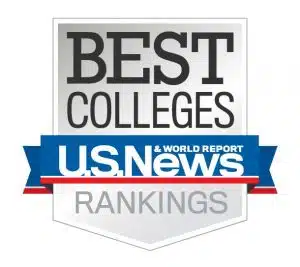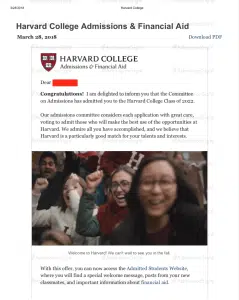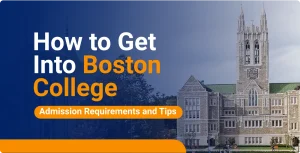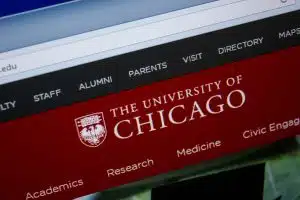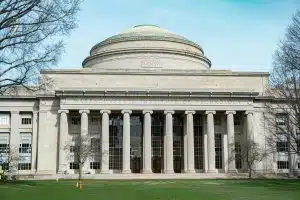If you’re thinking about applying to Columbia University, you’re probably wondering about the best way to maximize your chances of getting in. One common question that comes up is whether Columbia has Early Action.
Well, Columbia doesn’t offer Early Action (EA). But don’t worry, because there’s still Early Decision (ED), which comes with its perks.
In this blog, we’re going to break down everything you need to know. You’ll learn what the difference is between Early Decision and Regular Decision, how applying Early Decision can boost your chances of getting in, and what the application process looks like. So, stick around to find out if Early Decision is the right move for you!
- Columbia Offers Early Decision, Not Early Action
- Columbia Early Decision Acceptance Rate
- Columbia Regular Decision Acceptance Rate
- Should You Apply Early Decision at Columbia?
- Columbia Admission Requirements
- Frequently Asked Questions
- Takeaways
Columbia Offers Early Decision, Not Early Action
First things first: Columbia University offers Early Decision (ED), not Early Action (EA). But what does this mean for you?
When you apply Early Decision, you’re making a binding commitment. That means if Columbia accepts you, you have to attend. You can’t apply to other colleges for ED, and if you’re admitted, you must withdraw all your other applications.
ED is a serious commitment, so it’s important to only apply ED if Columbia is your absolute first choice and you’re ready to make that decision.
Here’s the Early Decision timeline you’ll need to follow:
- November 1. Your application deadline for Early Decision (and also for QuestBridge National College Match, if that’s your route).
- November 15. The deadline to submit your Early Decision financial aid application.
- Mid-December. This is when you’ll find out if you’ve been accepted, along with your financial aid decision.
- Early January: If you’re admitted, this is your deadline to officially respond to Columbia’s offer and commit.
Make sure you mark these dates on your calendar so you can stay on top of your application and not miss anything important.
Columbia Early Decision Acceptance Rate
For the Class of 2028, the Columbia Early Decision acceptance rate was 11.9%. Here’s a breakdown of Columbia’s ED acceptance rate over the past few years:
| Columbia Class | Total Early Decision Applications | Early Decision Acceptance Rate |
| 2028 | 6,009 | 11.9% |
| 2027 | 5,738 | 11.3% |
| 2026 | 6,305 | 10.3% |
| 2025 | 6,435 | 10.1% |
| 2024 | 4,318 | 15.1% |
As you can see, the Early Decision acceptance rate has been gradually decreasing over the years. While it was higher for the Class of 2024 at 15.1%, it has now dropped to around 11.9% for the Class of 2028.
Even with this slight dip, applying ED still offers you a better chance, as we’ll show in the next section. The ED path is worth considering if Columbia is your dream school.
Columbia Regular Decision Acceptance Rate
Now, if you’re not ready to commit to Early Decision and want to apply Regular Decision (RD), it’s important to know that the chances are a bit tougher.
For the Class of 2028, the RD acceptance rate was just 2.95%. That’s a pretty low number, so it’s a competitive pool with thousands of applicants vying for a spot.
Here’s a breakdown of Columbia’s Regular Decision acceptance rate over the past few years:
| Columbia Class | Total Regular Decision Applications | Regular Decision Acceptance Rate |
| 2028 | 54,239 | 2.95% |
| 2027 | 51,391 | 3.1% |
| 2026 | 54,072 | 3% |
| 2025 | 54,116 | 2.9% |
| 2024 | 35,766 | 5.1% |
As you can see, the RD acceptance rate has been steadily dropping over the years. It’s been a downward trend, from 5.1% for the Class of 2024 to 2.95% for the Class of 2028.
So, if you’re going the RD route, just know that it’s even more important to make your application stand out in a pool of highly competitive students.
Should You Apply Early Decision at Columbia?
So, now that you know the ins and outs of Columbia’s Early Decision process, you might be wondering if Early Decision is the right move for you. Well, that depends on a few things.
First off, if Columbia is your absolute dream school and you’re 100% sure you want to attend, then applying ED can boost your chances of getting in. Remember, the acceptance rate for ED is higher than RD—11.9% against 2.95% for the Class of 2028—so if you’re ready to make a binding commitment, it might be worth it.
But keep in mind, once you apply ED, you’re saying, “I’m all in,” so make sure you’re ready to commit to Columbia.
If you’re unsure about whether Columbia is the only school you want to go to, or if you’re still deciding between a few colleges, then ED might not be the best choice for you. Since it’s binding, if you get in, you have to go no backing out.
Also, consider your financial situation. If financial aid is a big concern for you, make sure you’re comfortable with the process. With ED, you’ll get your admission decision along with your financial aid package in mid-December, so you’ll know if it’s a good fit financially. If you’re not sure about the aid or cost, it might make more sense to apply RD and explore other schools too.
In short, if you’re super confident about Columbia being your top pick and you’re ready for the commitment, applying Early Decision could give you a solid advantage. But if you’re unsure or still need time to figure things out, Regular Decision might be a better fit for you.
Columbia Admission Requirements
Before you get started, it’s important to know what Columbia is looking for in applicants. Columbia is pretty selective, so making sure you’ve got all your ducks in a row will give you the best chance to stand out.
First off, Columbia accepts first-year applications for both Columbia College and Columbia Engineering, so no matter what your academic interests are, there’s a place for you. Columbia takes a holistic approach to reviewing applications, meaning they look at everything about you: your grades, your activities, your personal essay, and even what kind of contributions you can make to the Columbia community.
Application options
Columbia accepts the Coalition Application or the Common Application. If you’re a QuestBridge finalist, you can also apply through the QuestBridge Application.
Here are the application components:
- Autobiographical info. This is where you share who you are and your background.
- Achievements, activities, and employment. Make sure to include all your accomplishments, both inside and outside of school.
- Personal essay. This is your chance to show Columbia who you are and why you’re a good fit for their community.
Columbia-specific questions
Now, you’ll need to answer some questions specific to Columbia. These questions give the admissions team a deeper look at who you are beyond your grades. It’s your chance to show them what excites you and why Columbia is a good fit.
Here’s what you’ll need to answer:
- List a selection of texts, resources, and outlets that have shaped your thinking outside of school. (100 words or fewer)
- Tell us about a perspective or lived experience that’s important to you and how it would help you contribute to Columbia’s community. (150 words or fewer)
- Describe a barrier or obstacle you’ve faced and what you learned from it. (150 words or fewer)
- Why are you interested in attending Columbia? Share what makes Columbia special to you. (150 words or fewer)
- What attracts you to your preferred areas of study? Explain why you’re excited about what you want to study. (150 words or fewer)
Tips for answering these questions:
- Be yourself. Columbia wants to know you. Don’t try to sound like someone else—just be genuine and honest about your thoughts and experiences.
- Show, don’t just tell. Rather than simply saying something, give examples or tell a story to back it up. It helps your answer feel more real and personal.
- Stay focused. You’ve got a word limit for a reason! Stick to the point and make sure every sentence adds something important. You don’t have to explain everything—just the most important bits.
- Be specific. When talking about Columbia, don’t just say, “It’s a great school.” Get into the details. Mention specific professors, programs, or resources that excite you and explain why. It shows you’ve really researched the school.
- Keep it conversational. You don’t need to be overly formal. Write like you’re having a conversation with the admissions team. They want to hear your voice, not just your resume.
Secondary school report
- Transcript. They’ll want your official high school transcript from all the high schools you’ve attended.
- Counselor recommendation. You’ll need one recommendation from your high school counselor.
- Midyear report. This is a report showing your grades up until the middle of your senior year.
Teacher recommendations
Columbia requires two teacher recommendations. One of these must come from a math or science teacher if you’re applying to Columbia Engineering.
Tips for teacher recommendations:
- Choose the right teachers. Pick teachers who know you well and can speak to your strengths. Ideally, they should be able to talk about your academic skills, work ethic, and personal qualities. If you’re applying to Columbia Engineering, make sure one of them is a math or science teacher.
- Ask early. Teachers are busy, so give them plenty of time to write a thoughtful recommendation. Don’t wait until the last minute. Ask at least a month before the deadline.
- Give them context. When you ask your teacher for a recommendation, remind them of the great work you did in their class. You can even provide them with a summary of your accomplishments, personal goals, and why you’re excited about applying to Columbia. This helps them write a more detailed and personalized letter.
- Be polite and appreciative. Asking for a letter of recommendation is a big favor. Be sure to express your gratitude for their time and effort. A thank you note after the letter is submitted can go a long way!
- Don’t be afraid to follow up. If the deadline is approaching and you haven’t received the recommendation yet, it’s okay to send a friendly reminder. Just be respectful of their time!
With strong teacher recommendations, you’ll be one step closer to showing Columbia who you are beyond your grades and test scores.
Application fee
The application fee is $85. If the fee is a burden for your family, though, you can apply for a fee waiver.
Columbia offers fee waivers for students who meet certain eligibility criteria, including:
- Students for whom the application fee is a hardship
- First-generation college students
- Students attending a New York City public school
- Students enrolled in a U.S. federally or state-recognized tribe
- Undocumented students
- Students working with a community-based organization like Upward Bound or TRIO
- U.S. military veterans or active-duty service members
- Students living in FEMA-declared disaster areas or regions affected by natural disasters
If you qualify for a fee waiver, you’ll simply indicate it on your application. No extra paperwork is needed; just check the box during the application process. Make sure you check your eligibility before submitting your application. Once it’s in, they cannot refund the fee.
Standardized tests (optional)
Columbia is test-optional, meaning you don’t have to submit your SAT or ACT scores if you don’t want to. But if you think your scores reflect your abilities and would add value to your application, feel free to include them.
Here’s a quick look at the average scores of admitted students if you decide to submit your SAT or ACT scores:
| Test | 25th Percentile | 50th Percentile (Median) | 75th Percentile |
| SAT | 1500 | 1530 | 1560 |
| ACT | 34 | 35 | 35 |
If you’re considering submitting your SAT or ACT scores, it’s helpful to aim for scores close to or above the 75th percentile. For SAT, that’s around 1560, and for ACT, it’s about 35.
But remember, if your scores aren’t in that range, you can still have a strong application without them. Columbia is looking at the whole picture your grades, essays, teacher recommendations, and extracurriculars so don’t stress if your scores are on the lower end. The most important thing is that you present the best version of yourself in your application.
Supplementary materials (optional)
If you have something that showcases your talents, like a portfolio or extra letters of recommendation, feel free to submit it. These materials are optional but can help paint a fuller picture of who you are.
Remember, everything you submit should add value to your application, so make sure it aligns with the story you want to tell about yourself. If you’ve got something special to share, go for it!
Frequently Asked Questions
1. Does Columbia offer Early Action?
Columbia only offers Early Decision (ED), not Early Action. If you apply ED, you’re committing to attend Columbia if you’re accepted so it’s a big decision! You won’t be able to apply to other schools for ED, so make sure Columbia is your top choice before committing.
2. How much will applying Early Decision help my chances?
Applying Early Decision can boost your chances a bit since the acceptance rate for ED is generally higher than Regular Decision (RD). For example, the ED acceptance rate for the Class of 2028 was about 11.9%. In comparison, the RD acceptance rate is much lower, sitting at just 2.95%. So, if you’re sure Columbia is where you want to go, ED could be your best shot!
Just keep in mind that applying ED is a big commitment because, if accepted, you have to attend Columbia and withdraw any other college applications. Make sure you’re 100% certain before you apply!
3. What’s the application deadline for Early Decision?
If you’re applying for Early Decision, your application is due by November 1st. Don’t forget, if you’re applying for financial aid, that’s due by November 15th too. Make sure you’ve got everything ready well before the deadline!
4. When does the Columbia ED decision come out?
If you apply through Early Decision at Columbia, you’ll hear back in mid-December. This is when they’ll let you know if you’ve been accepted, and you’ll also receive your financial aid decision at the same time.
5. Do I need to submit my SAT or ACT scores?
Columbia is test-optional, so you don’t have to submit your SAT or ACT scores unless you want to. If you feel like your scores reflect your abilities, feel free to send them in! Just remember, submitting your scores is totally up to you.
Takeaways
- Columbia doesn’t offer Early Action, but Early Decision could still be a great option if you’re sure it’s your top school.
- Applying Early Decision gives you a better chance of getting in, but remember, it’s a binding commitment. The acceptance rate for ED is 11.9%, which is much higher compared to the 2.95% acceptance rate for Regular Decision.
- Make sure to hit those deadlines: November 1st for your Early Decision application and November 15th for financial aid.
- Test scores are optional, so submit them if you think they’ll strengthen your application, but it’s totally up to you!
- If you want personalized guidance through the Columbia application process, check out AdmissionSight’s Private Consulting Program for expert help every step of the way.











